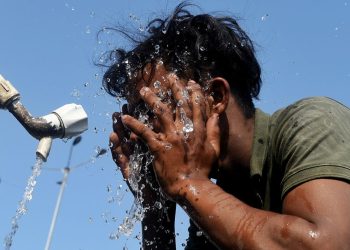Oleksandr Syrskii posted on Telegram on Sunday, saying, “The situation in the Kharkiv region has significantly worsened this week.” “Battles are still raging in the border areas along the state border with Russia.”
The military chief of Ukraine has acknowledged that his troops are in a “difficult situation” in Kharkiv’s northeast, where hundreds more civilians have left their homes as Russian forces press forward.
The Russian attackers have scored “partial successes” in certain locations, he acknowledged, but the Ukrainian defense forces are doing everything they can to hold defensive lines and positions.
At least one Ukrainian battalion has been forced to retreat due to the fierce fighting, giving Russian forces greater territory over less fortified villages in the so-called contested “grey zone” near the Russian border.
By Sunday afternoon, one of the biggest towns in the northeast, Vovchansk had 17,000 residents prior to the war, and it became a major hub for fighting.
The chief of the Kharkiv regional police, Volodymyr Tymoshko, reported that Russian forces were approaching the town from three different routes and were on the outskirts. He declared, “Infantry fighting is already happening.” According to Tymoshko, a Russian tank was seen on a main route that led to the town, demonstrating Moscow’s willingness to use heavy armament.
Teams of volunteers worked nonstop all day to remove the residents—the majority of whom were elderly—from danger.
Governor Oleh Syniehubov posted a statement on social media stating that since Moscow’s soldiers began the operation on Friday, at least 4,000 citizens have left the Kharkiv region. According to him, there was fierce fighting on Sunday in the northeast front line, when Russian soldiers had stormed 27 towns in a single day.
The Russian Ministry of Defense announced on Sunday that, in addition to the five villages that were reportedly taken on Saturday, its soldiers had also taken control of four border communities. Because of the intense battle and ongoing severe shelling, these regions were probably not well fortified, which facilitated the Russian breakthrough.
The Ukrainian government has not confirmed Moscow’s victories. However, Tymoshko said that Strilecha, Pylna, and Borsivika were occupied by the Russians and that the Russians were sending in infantry to launch attacks on the beleaguered settlements of Hlyboke and Lukiantsi.
On Sunday, Volodymyr Zelenskyy, the president of Ukraine, declared that there were fierce conflicts going on throughout the area.
Zelenskyy declared, “The idea behind the strikes in the Kharkiv region is to stretch our forces and undermine the moral and motivational basis of the Ukrainians’ ability to defend themselves.” He continued, “Defensive battles and violent combat continue on a wide section of our borderline.”
Reporting from Kyiv, the capital of Ukraine, Al Jazeera’s John Holman stated that the gains are “significant not just because of the territory but also because in 10km (6 miles) or so they will be at a shelling distance of Kharkiv city, the second largest city in Ukraine.”
“It also implies that Ukraine is extremely thin on both fronts, and it will likely need to reassign soldiers from other regions to the Kharkiv area,” he continued.
According to analysts, the Russian effort is intended to take advantage of ammunition shortages before promised supplies from the West can get to the front lines. According to Ukrainian soldiers, the Kremlin is employing a standard Russian approach to deplete its forces and ammunition: launching an excessive number of fire strikes and infantry assaults.
Russian forces are fighting fierce clashes farther south, where Moscow is also gaining territory, and they are threatening to pin Ukrainian forces in the northeast by stepping up their efforts in what was previously a static section of the front line.











